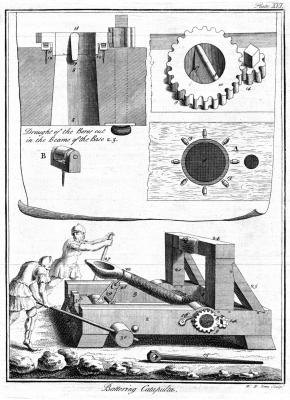Make a Catapult Out of Popsicle Sticks, String, Tape, a Spoon and aRubber Band
When you are learning about weaponry and artillery from the dark ages, you may be amazed by how powerful and widely used catapults were for launching objects into and over fortress walls. One way to increase your understanding of these early weapons is to create a miniature catapult yourself, using a few basic materials that can be found at any office supply store. This enables you to recreate a working catapult that you can use to launch small, soft objects.
Instructions
- 1 Place three popsicle sticks into a triangle, and securely tape all of the corners using duct tape. Repeat this process to create a total of three taped-together triangles from popsicle sticks.
2 Tape two of the popsicle triangles together along one side, opening up the triangles into a 60 degree angle. Place the taped triangles upright onto a table top.
3 Place the third triangle flat onto the table in front of the upright triangles, and slide it in between the two taped together triangles, which should be a perfect fit. Tape the sides to secure the form into a nearly complete pyramid.
4 Insert the handle of a plastic spoon into the corner where all of the triangles touch, and wrap string around the handle and the corner of the pyramid to secure the spoon in place. Position the spoon bowl side up at a 45-degree angle from the bottom of the pyramid.
5 Loop a medium rubber band around the bowl of the spoon and also around the top of the pyramid. Place a soft object into the bowl of the spoon, pull it back, then release the spoon to launch the object across the room.










